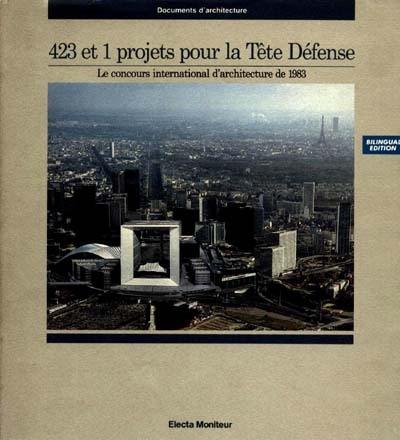
Fiche technique
Format : Broché
Nb de pages : 208 pages
Poids : 716 g
Dimensions : 22cm X 24cm
EAN : 9782866530716
423 et 1 projets pour la Tête-Défense
concours international d'architecture
Quatrième de couverture
En mars 1982, la présidence de la République française annonçait la mise en oeuvre de grandes opérations d'urbanisme et d'architecture parmi lesquelles Tète Défense. A l'issue du concours international d'architecture organisé en juillet 1982, le jury se réunissait en avril 1983 pour choisir, parmi les quatre cent vingt-quatre projets reçus, les quatre qui devaient être proposés au président de la République. Le 25 mai 1983, un communiqué de la présidence de la République annonçait le choix par M. François Mitterrand du projet de l'architecte danois Johan-Otto von Spreckclsen. On remarquait parmi les participants de nombreux architectes de réputation internationale. Par sa situation, l'opération Tête Défense revêt une importance particulière : elle modifie toute l'organisation symbolique de l'agglomération parisienne.
Revoir aujourd'hui les 424 projets conçus en 1983 lors du concours international d'architecture pour la Tête Défense à plus d'un intérêt. D'abord, celui d'offrir un panorama de possibilités pour la prise de possession d'un site prestigieux, à l'extrémité du grand axe est-ouest qui traverse Paris depuis le Palais du Louvre jusqu'à la Défense, passant par la place de la Concorde et l'Are de Triomphe de l'Ecoile. Celui, ensuite, de présenter un éventail des tendances internationales d'architecture dans la mesure où trente-huit pays étaient représentés. La réédition de ce livre paru en 1984, depuis longtemps épuisé, était donc nécessaire c'est un document indispensable pour comprendre la signification de la Grande Arche de la Défense aujourd'hui réalisée, et saluée comme la réussite exemplaire d'une opération grandiose.
In March 1982, the President of the French Republic announced that vast town-planning and architectural operations, including the Tête Défense, were to be implemented. At the close of the international architectural competition organized in July 1982, the selection committee met in April 1983 to chose,from among the 424 projects received, the four to be presented to the President of the Republic. On the 25th of May 1983, the Presidency issued a press release announcing that Mr. François Mitterrand had selected the project of the Danish architect Johan-Otto von Spreckclsen.
The very position of the Tête Defense is of the utmost importance asit modifies the entire symbolic organization of Greater Paris.
Taking a look today at the 424 projects designed for the Tête-Défense international architecture competition in 1983 is interesting in more ways than one.
To begin with they give a panorama of the possibilities that vied for a high-prestige sites the western end of the big cast-west axis that crosses Paris from the Palais du Louvre to la Défense, cutting the place de la Concorde and the Arc de Triomphe at l'Ecoile.
And they also show a cross section of international trends since some thirty-eight countries were represented.
First published in 1984 and out et stock for some time now, the second edition of this book was indeed necessary, it is a document that enables people to understand the full signification of the Grand Arch standing at la Défense today, rightly hailed as the exemplary achievement of a grandiose operation.





